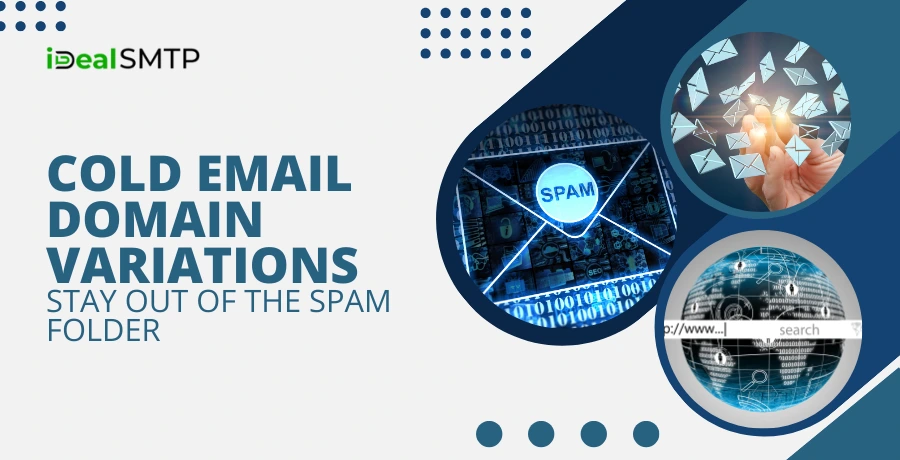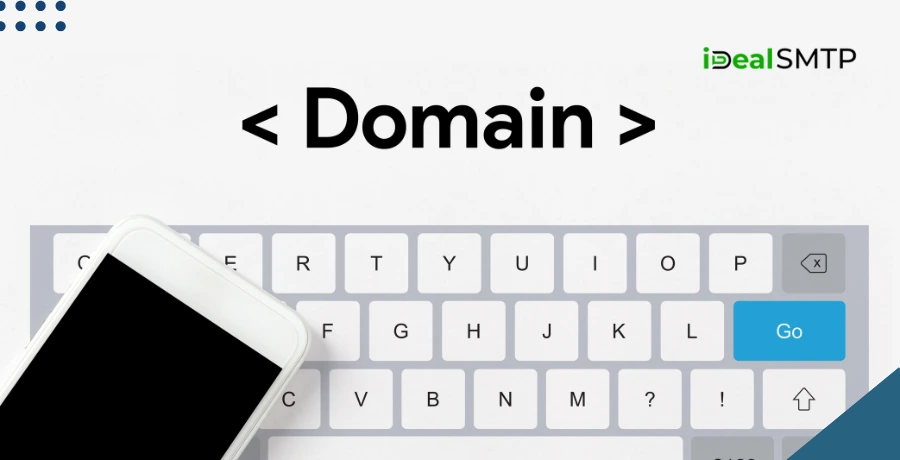Cold emailing is one of the best ways to reach out to potential customers or business partners, especially in B2B marketing. Unlike regular emails sent to people you already know or who have subscribed to your list, cold emails are sent to strangers. The goal is to grab their attention, introduce your business, and start a conversation.

However, there’s a big problem with cold emailing. Many emails end up in the spam folder. That means your message never reaches the person you’re trying to connect with. This is where domain variations for cold email come in. These special domains help protect your main business and make sure your messages are more likely to land in inboxes instead of spam folders.
In this blog, you’ll learn everything about cold email domain variations, how to use them, why they matter, and how they can help you stay out of the spam folder.
Table of Contents
Pricing
| Trail Plan | Standard Plan | Premium Plan | Professional Plan |
| $50 | $145 | $185 | $225 |
| Sending Limit | Sending Limit | Sending Limit | Sending Limit |
| 1000 Emails/Hour | 1500 Emails/Hour | 3000 Emails/Hour | 5000 Emails/Hour |
What is a Cold Email Domain?
A cold email domain is a domain that you use only for sending cold emails. It is not the same as your main business domain. For example, if your company website is called idealsmtp.com, then you should not send cold emails from that domain. Instead, you should register a similar but different domain, like examplebusiness.co, just for cold email purposes.
Using a separate cold email domain protects your main business domain from being damaged if your emails get marked as spam or blocked. It also helps you monitor and improve your deliverability separately from your main email systems.
Why Cold Emails Often Land in the Spam Folder
Cold emails go to spam for many reasons. First, email service providers look at your sending behavior. If you send too many emails at once, or if people mark your emails as spam, your domain reputation will drop. Once your domain reputation is damaged, even your good emails will start going to the spam folder.
Also, if your email doesn’t follow best practices like using SPF, DKIM, and DMARC records, or if the content of your email is not well written, it might be flagged as spam. Another common reason is using your main business domain for cold outreach. When you use your main domain and it gets blacklisted, your entire business email system can suffer.
This is why cold email domains and domain variations are so important. They reduce your risk and help maintain better deliverability.
What are Domain Variations for Cold Email?
Domain variations for cold email are alternate versions of your main domain name. These domains are designed to look similar to your real business domain, but they are used only for cold outreach. They allow you to send messages safely without putting your main domain at risk.
For example, if your real domain is brightmarketing.com, you can use variations like brightmarketing.co, bright-marketing.com, or brightmarketingmail.com. These domain variations look professional and help the recipient recognize your brand, but they keep your main domain safe in case anything goes wrong.
Cold email domain variations also help you scale your outreach. By using multiple variations, you can send more emails each day while keeping your sending volume low per domain, which improves your chances of avoiding spam filters.
Advantages of Using Cold Email Domain Variations
Using domain variations for cold email gives you a major advantage in modern email marketing. The first benefit is brand protection. Your main business domain is the face of your company online. If it gets flagged or blacklisted due to cold emailing, your entire business could suffer. Using variations allows you to separate your marketing from your business operations.

Another major benefit is improved deliverability. Email service providers track sending history. When you start fresh with a clean, cold email domain and warm it up slowly, you can build a positive reputation for that domain. This increases the chances that your cold emails reach the inbox.
Domain variations also give you more flexibility. You can test different messaging strategies, email copy, or target groups without harming your main reputation. You can even assign different domain variations to different team members or campaigns.
Finally, using cold email domain variations helps you safely grow your outreach volume. Instead of sending hundreds of emails from a single domain and triggering spam filters, you can divide your volume across several domains and stay under the radar.
How to Choose the Right Domain Variations for Cold Email
Choosing a good domain variation is very important. It should look close to your original domain so that people trust your message. For instance, if your brand is idealsmtp.com, good cold email domain variations could be idealsmtp.co, digitalaka.com, or smtpmart.com.
Try to choose domain names that are short, clean, and professional. Avoid domains with numbers, dashes, or strange endings. It’s best to stick with common extensions like .com, .co, .net, or .io. These are trusted by email providers and don’t look suspicious.
Make sure that your cold email domains look real and align with your brand. A strange or unrelated domain name will raise red flags and reduce your open rates.
How Many Cold Email Domains Do You Need?
The number of cold email domains you need depends on how many emails you want to send each day. If you’re just starting and plan to send under 100 cold emails per day, one or two domains are enough. If you’re sending 300 to 500 cold emails daily, you’ll want three to five domains.
Large teams or agencies that send thousands of emails per week may need five or more cold email domains. The goal is to keep email volume low per domain. This helps avoid spam filters and keeps your domain reputation clean.
Using multiple domain variations for cold email gives you the flexibility to grow your campaigns safely and avoid sudden blocks or blacklists.
How to Set Up Cold Email Domains the Right Way
Setting up cold email domains properly is the key to success. The first step is to buy your domain variations from a trusted domain registrar like Namecheap or GoDaddy. Once you own the domains, create business-like email addresses for each one, such as [email protected] or [email protected].
Next, set up SPF, DKIM, and DMARC records in your DNS settings. These records prove to email providers that you are a legitimate sender. Without these, your emails will likely be marked as spam.
Before sending any cold emails, warm up your domains slowly. Start by sending a few emails a day, and increase the volume over a few weeks. This warm-up process helps build a strong sending reputation.
Finally, use reliable cold email tools like Lemlist, Instantly, or Smartlead. These platforms support multiple inboxes and help you manage your campaigns efficiently.
Common Mistakes to Avoid with Cold Email Domains
Many beginners make mistakes when using domain variations for cold email. One of the biggest errors is skipping the warm-up phase. Sending cold emails right after buying a new domain will damage your sender score quickly.
Another mistake is using free email domains like Gmail, Yahoo, or Outlook for cold outreach. These are not meant for cold emailing and can easily get blocked or flagged.
You should also avoid sending hundreds of emails per day from a single domain. This will attract spam filters. Instead, spread your outreach across multiple cold email domains.
Lastly, don’t choose domain variations that look unprofessional or unrelated to your brand. A confusing domain name will hurt trust and lower your response rate.
Best Practices to Keep Your Cold Emails Out of the Spam Folder
To keep your emails in the inbox and not the spam folder, always follow best practices. Warm up every domain properly before starting outreach. Limit each domain to 30 to 50 cold emails per day, even after warming up.
Make sure your email content is clear, simple, and relevant. Avoid using spammy words like “buy now,” “free trial,” or “click here.” Also, personalize your emails to make them more appealing to the reader.
Regularly check your domain reputation using tools like Google Postmaster Tools or MXToolbox. If a domain’s reputation starts dropping, stop using it and switch to another cold email domain variation.
Rotate domains every few months to keep your outreach fresh and safe. Always monitor performance and make improvements based on data.
A Case Study of Domain Variations in Action
Let’s look at a real-life example. A growing SaaS company was using its main domain to send cold emails. After two weeks, their open rates dropped, and emails started landing in spam. They realized their domain had been blacklisted due to high email volume and cold outreach.

They registered three cold email domain variations similar to their main brand. They set up SPF, DKIM, and DMARC, then warmed them up over three weeks. After switching their cold email campaigns to these new domains, their open rates improved by over 60 percent.
They were able to send more emails, keep their main domain safe, and grow their business without running into deliverability problems again.
Helpful Tools for Managing Cold Email Domains
Several tools can help you manage and protect your cold email domains. Tools like Lemwarm, Mailwarm, and Warmup Inbox are great for warming up new domains. Google Postmaster Tools lets you monitor domain reputation.
Platforms like Instantly and Smartlead help you manage multiple domains and inboxes from one dashboard. MXToolbox is useful for checking your DNS records and making sure your setup is correct.
By using these tools, you can manage your cold email domain variations effectively and avoid common mistakes.
Frequently Asked Questions About Cold Email Domains
Many people ask if it’s okay to use their main domain for cold outreach. While it’s possible, it’s not recommended. Using a separate cold email domain keeps your business safe if anything goes wrong.
Another common question is how long to warm up a new domain. Most experts suggest warming up over two to four weeks, depending on your volume goals.
You might also wonder if it’s okay to use one domain for multiple inboxes. Yes, but try to keep it to two or three inboxes per domain to maintain a healthy sending reputation.
Lastly, some people ask about using new domain endings like .xyz or .tech. These are not always trusted by email providers. It’s better to use common TLDs like .com, .co, or .net for better results.
Final Thoughts
Using domain variations for cold email is one of the smartest strategies in modern email marketing. It protects your main domain, improves deliverability, and gives you the freedom to scale your outreach safely.
When you choose the right cold email domains, set them up properly, and warm them up with care, you create a system that works. Your emails land in inboxes, your messages are read, and your business grows.
In today’s digital world, where email providers are constantly upgrading their filters, using cold email domain variations is no longer an option; it’s a necessity.
By following the steps in this blog, you’ll stay out of the spam folder and build a strong, reliable cold email system that works for your business.
FAQs
Here are the top FAQs on Domain Variations for the Cold Email blog:
1. What are cold email domains?
Cold email domains are separate from your main business domain and are used exclusively for outreach to new contacts. These domains help you protect your main domain’s reputation while allowing you to safely run cold email campaigns.
2. Why should I use domain variations for cold email?
To protect your main domain from spam issues.
3. Can I send cold emails from my main domain?
Sending cold emails from your main domain can be risky. If your emails are marked as spam or your domain gets blacklisted, your entire business communication can suffer. That’s why experts suggest using cold email domain variations.
4. How many cold email domains do I need?
The number of cold email domains you need depends on your daily outreach. For 50–100 emails/day, 1–2 domains are enough. If you send more, use 3–5 domain variations to avoid triggering spam filters.
5. What is domain warming for cold email?
Gradually increasing your email activity.
6. How long should I warm up a cold email domain?
Ideally, you should warm up a cold email domain over 2 to 4 weeks. Start with 10–20 emails per day and increase the volume gradually while monitoring your deliverability and reputation scores.
7. Which domain extensions are best for cold email?
For cold email domains, it’s best to use trusted extensions like .com, .co, or .net. These are widely accepted and help improve deliverability. Avoid unusual or free extensions like .xyz or .tk, as they may look suspicious.
8. What are cold email domain variations?
Slightly different versions of your main domain.
9. How do I choose a cold email domain variation?
Choose a domain that closely resembles your business name. It should be short, easy to read, and trustworthy. Avoid using too many dashes, numbers, or strange endings that might trigger spam filters.
10. What if my cold email domain gets blacklisted?
Stop using it and switch to another.







